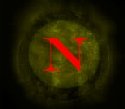 The McKinley Tariff Act of 1891 required that all merchandise manufactured outside of the United States be marked or labeled with the country of manufacture. From 1891 to 1921 many items that were manufactured in Japan were branded with the word Nippon. However, in 1921 the United States government decided that merchandise coming from Japan had to be marked as such, even though Nippon means the source of the rising and son and it is what the Japanese call their country. Merchandise labeled or branded Nippon from that era however has become increasingly collectible and valuable depending on it design.
The McKinley Tariff Act of 1891 required that all merchandise manufactured outside of the United States be marked or labeled with the country of manufacture. From 1891 to 1921 many items that were manufactured in Japan were branded with the word Nippon. However, in 1921 the United States government decided that merchandise coming from Japan had to be marked as such, even though Nippon means the source of the rising and son and it is what the Japanese call their country. Merchandise labeled or branded Nippon from that era however has become increasingly collectible and valuable depending on it design.Although Japan had a long history of producing porcelain, the porcelain marked Nippon was strictly produced for import into the United States and the west. Because Japan did not have counterfeit or copyright laws and they were trained by westerners from other countries, they were able to produce items that were very close in quality and likeness to many other manufacturers of the time, including Beleek and Limoges. Antique Nippon china and porcelain is usually hand painted and very ornately decorated and designed. While elaborate pieces of Nippon are bringing in top dollar, pieces with less design and a lot of white space are bringing in less money.
People also are being cautious because of the amount of fake and reproduction Nippon china available on the open market. According to reports, the fakes first started appearing in the 1980’s with fake stamps bearing a familiar wreath known to Nippon collectors. The more savvy collectors can tell the difference between the fake and the real stamp, but many people cannot and they purchased the fakes. Other companies started reproducing merchandise
 using actual molds. Most collectors however can tell the difference by the way the porcelain looks and feels and most of these newer reproductions do not bear the proper stamp or label.
using actual molds. Most collectors however can tell the difference by the way the porcelain looks and feels and most of these newer reproductions do not bear the proper stamp or label.



No comments:
Post a Comment